On Friday, September 13th, ENST 291 ventured north on the Taconic Parkway to explore Columbia County. First, we visited the dairy component of Grazin’ Angus Acres in Ghent NY. Grazin’ Angus Acres is primarily a 300 acre meat farm, while the neighboring dairy operation is only 40 acres. Although the farm is not “organic,” it is a small-scale operation with a high regard for land management.
There, we met Saundra Ball, a worker on the farm. Glad to “tell the story of what a dairy looks like,” she proudly showed us cows in their field and the cleanliness of the farm’s milking barn. The whole operation was incredibly picturesque:
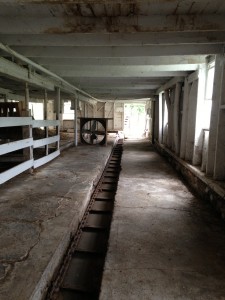
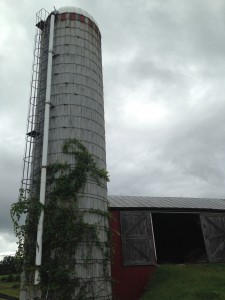

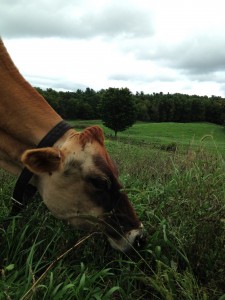
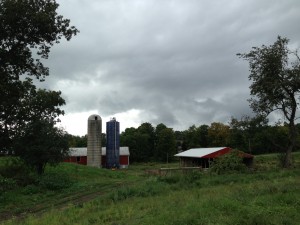

The obvious care for the land and cows in this operation makes us ask a question: how does this operation sustain itself in Columbia County? The main answer is demand in New York City. The dairy’s “grass-fed” milk comes at a price: $7 per half gallon. To some, this may seem like a shockingly high price, but Saundra claims this is a price that the market in New York City is willing to pay, where the milk is marketed as “grass-fed.” In fact, the Hudson Valley’s proximity to the city is partly what attracted her, originally from Texas, to the area. She considers the Hudson Valley to be the best location for beginning farmers, both because of the increasing NYC demand for local farm products, including her non-homogenized milk, and because it is not necessary for one to own land before beginning to farm. Still, she stresses the need for small farms to share resources, asserting that the farm could definitely not afford selling to a commodity system before consumer purchase.
For Saundra, a Columbia University graduate with two Master’s degrees and previous work in international affairs, to pick a career in dairy farming may first surprise you. However, she is only one of many graduates of elite colleges and universities who are getting involved in a growing movement that criticizes the practices of large scale food production and encourages the growth of small, local farms. “It makes a lot more sense [economically] to pack cows into machines, but we value small farms,” says Saundra. Highly educated but living on a wage of fifty dollars a day, she is nonetheless immensely satisfied by the work she does, including the close connection she shares with the cows. In addition, it is the everyday “meditative” routine and communication with nature she is able to have that really makes her enjoy what she does. Learn more about Saundra in her interview with Heritage Radio Network here.
From the farm, our group then ventured off to a more densely settled landscape: Hudson, NY. The city is well known for its antiques, restaurants, and music scene that cater to weekenders from New York City and give the small city its charm. We studied the planned site of the Marina Abromovich Institute. What was a dilapidated community athletic center will soon be a mecca for performance art enthusiasts:
The juxtaposition of worn structures with the relatively recent gentrification of Warren St. does visually display the underlying economic inequalities of the city as well as how essential tourism is to Hudson. When it is considered that more people on average live in poverty in Hudson than elsewhere in New York State, an important question should be asked: can the benefits of the economic growth in Hudson’s amenity economy be distributed to all residents? Hopefully we can continue to ponder this question in different contexts throughout this course.
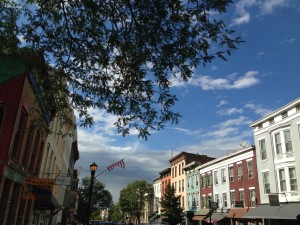
Warren St. in Hudson

Chest of drawers priced at $32,000 at Noonan Antiques

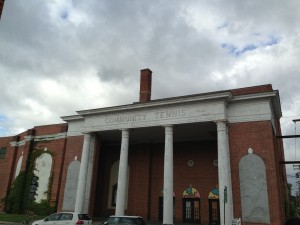

Pingback: putting the Hudson Valley on the musical map: Basilica Soundscape and O+ Festival | Musical Urbanism
Pingback: Thoughts From Places: My Farm Fresh Rail Tour | The Hudson Valley's Amenity Economy